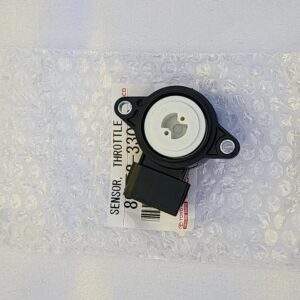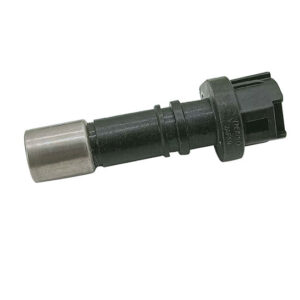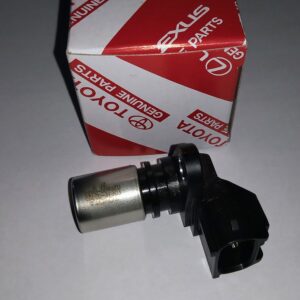Title: The Crankshaft Sensor: The Engine’s Precision Navigator
In the intricate symphony of an automotive engine, where every movement is meticulously choreographed, the crankshaft sensor emerges as a silent sentinel, guiding the engine’s operation with unparalleled precision. Despite its small size and unassuming appearance, this critical component plays a pivotal role in ensuring optimal engine performance, efficiency, and reliability. In this blog, we’ll delve into the significance of the crankshaft sensor, how it works, its importance in engine management, and its indispensable contribution to the driving experience.
### Unveiling the Crankshaft Sensor
The crankshaft sensor, also known as the crank position sensor (CKP sensor), is a vital component of the engine management system in modern vehicles. Positioned near the crankshaft or crankshaft pulley, its primary function is to monitor the rotational speed and position of the crankshaft.
### How the Crankshaft Sensor Works
The crankshaft sensor operates based on various technologies, including Hall effect, magnetic reluctance, or optical sensors. Regardless of the technology used, the basic principle remains the same: the sensor detects the passage of teeth or markers on the crankshaft or crankshaft pulley as it rotates, generating electrical signals that are interpreted by the engine control unit (ECU) or powertrain control module (PCM).
### Importance of the Crankshaft Sensor in Engine Management
1. **Precise Timing Control**: The crankshaft sensor provides essential data to the ECU or PCM, allowing for precise control of ignition timing, fuel injection timing, and other engine parameters. This ensures optimal combustion efficiency and engine performance under various operating conditions.
2. **Misfire Detection**: Crankshaft sensors can also detect engine misfires by monitoring variations in crankshaft speed and position. This information allows the ECU or PCM to identify and correct misfire events, reducing emissions and improving engine reliability.
3. **Variable Valve Timing (VVT) Control**: In engines equipped with variable valve timing systems, crankshaft sensors play a crucial role in adjusting valve timing and lift according to driving conditions, optimizing power delivery and fuel efficiency.
### Signs of a Failing Crankshaft Sensor
– **Check Engine Light**: An illuminated check engine light on the dashboard may indicate a problem with the crankshaft sensor.
– **Engine Stalling or Hesitation**: Engine stalling, hesitation, or rough idling can be symptoms of a failing crankshaft sensor.
– **Difficulty Starting**: Difficulty starting the engine or prolonged cranking times may occur if the crankshaft sensor is malfunctioning.
– **Loss of Power**: A decrease in engine power or performance may occur if the crankshaft sensor is not functioning properly.
### Conclusion
In the intricate tapestry of engine management and performance, the crankshaft sensor stands as a silent navigator, guiding the engine’s operation with precision and accuracy. From timing control to misfire detection and variable valve timing control, the role of the crankshaft sensor in shaping engine performance and efficiency cannot be overstated. As automotive technology continues to advance, the importance of crankshaft sensors in achieving optimal engine operation remains undeniably critical, ensuring that vehicles navigate the roads with power, efficiency, and reliability.
In stock (can be backordered)
$12,851.68
Title: The Crankshaft Sensor: The Engine’s Precision Navigator
In the intricate symphony of an automotive engine, where every movement is meticulously choreographed, the crankshaft sensor emerges as a silent sentinel, guiding the engine’s operation with unparalleled precision. Despite its small size and unassuming appearance, this critical component plays a pivotal role in ensuring optimal engine performance, efficiency, and reliability. In this blog, we’ll delve into the significance of the crankshaft sensor, how it works, its importance in engine management, and its indispensable contribution to the driving experience.
### Unveiling the Crankshaft Sensor
The crankshaft sensor, also known as the crank position sensor (CKP sensor), is a vital component of the engine management system in modern vehicles. Positioned near the crankshaft or crankshaft pulley, its primary function is to monitor the rotational speed and position of the crankshaft.
### How the Crankshaft Sensor Works
The crankshaft sensor operates based on various technologies, including Hall effect, magnetic reluctance, or optical sensors. Regardless of the technology used, the basic principle remains the same: the sensor detects the passage of teeth or markers on the crankshaft or crankshaft pulley as it rotates, generating electrical signals that are interpreted by the engine control unit (ECU) or powertrain control module (PCM).
### Importance of the Crankshaft Sensor in Engine Management
1. **Precise Timing Control**: The crankshaft sensor provides essential data to the ECU or PCM, allowing for precise control of ignition timing, fuel injection timing, and other engine parameters. This ensures optimal combustion efficiency and engine performance under various operating conditions.
2. **Misfire Detection**: Crankshaft sensors can also detect engine misfires by monitoring variations in crankshaft speed and position. This information allows the ECU or PCM to identify and correct misfire events, reducing emissions and improving engine reliability.
3. **Variable Valve Timing (VVT) Control**: In engines equipped with variable valve timing systems, crankshaft sensors play a crucial role in adjusting valve timing and lift according to driving conditions, optimizing power delivery and fuel efficiency.
### Signs of a Failing Crankshaft Sensor
– **Check Engine Light**: An illuminated check engine light on the dashboard may indicate a problem with the crankshaft sensor.
– **Engine Stalling or Hesitation**: Engine stalling, hesitation, or rough idling can be symptoms of a failing crankshaft sensor.
– **Difficulty Starting**: Difficulty starting the engine or prolonged cranking times may occur if the crankshaft sensor is malfunctioning.
– **Loss of Power**: A decrease in engine power or performance may occur if the crankshaft sensor is not functioning properly.
### Conclusion
In the intricate tapestry of engine management and performance, the crankshaft sensor stands as a silent navigator, guiding the engine’s operation with precision and accuracy. From timing control to misfire detection and variable valve timing control, the role of the crankshaft sensor in shaping engine performance and efficiency cannot be overstated. As automotive technology continues to advance, the importance of crankshaft sensors in achieving optimal engine operation remains undeniably critical, ensuring that vehicles navigate the roads with power, efficiency, and reliability.
| Warehouse | Inventory at warehouse 2 |
|---|



Get E-mail updates about our latest products and special offers.
Sensors and More is Jamaica’s ultimate online auto parts store. Established in 2020, we specialize in genuine electrical parts for Japanese, Read more…
Reviews
There are no reviews yet.